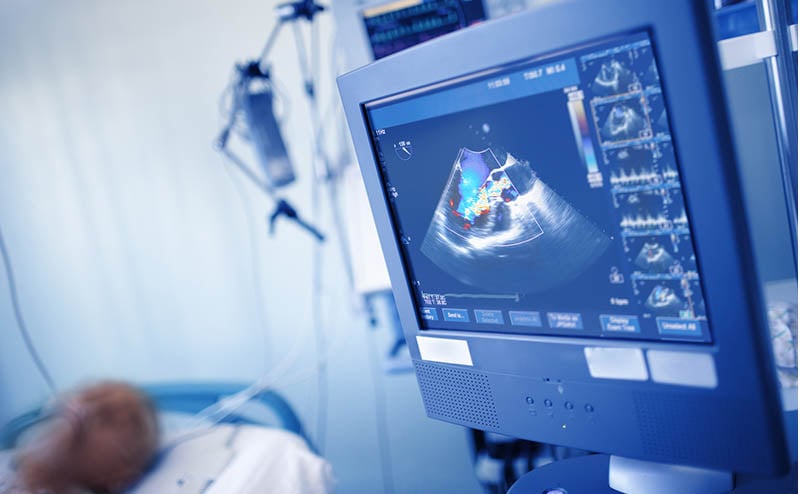
Establishing a Hybrid Point of Care Ultrasound Program at the University Teaching Hospital of Kigali
Patrick Lanter MD
Stanford University
Eric Nsengiyumva, MD
University Teaching Hospital of Kigali (CHUK)
Enoch Obeng MD
Stanford University
Tim Batchelor MD
Stanford University
Gihana Charles Wilson MD
University Teaching Hospital of Kigali (CHUK)
Turamyimana Faustin MD
University Teaching Hospital of Kigali (CHUK)
Niyigirimbzi Claudien MD
University Teaching Hospital of Kigali (CHUK)
Nick Ashenburg, MD
Stanford University
Benjamin Lindquist MD
Stanford University
In-Hei Hahn MD
Stanford University
Pascal Mugemangango, MD
University Teaching Hospital of Kigali (CHUK)
Doris Lorette Uwamahoro, MD
University Teaching Hospital of Kigali (CHUK)
Michelle Feltes, MD
Stanford University
Point-of-care Ultrasound (POCUS) stands out as a versatile, readily accessible, and highly accurate diagnostic tool in emergency medicine. This is particularly apparent in settings where access to advanced diagnostic equipment such as x-ray and CT scanners is limited. However, the effectiveness of POCUS is contingent upon the proficiency of the operator, underscoring the critical importance of thorough, high-quality training when introducing POCUS to new users.
At the University Teaching Hospital of Kigali (CHUK), the sole institution with an Emergency Medicine (EM) residency program in Rwanda, Stanford Emergency Medicine Department’s Global Emergency and Ultrasound Sections have collaborated with CHUK and the University of Rwanda (UR) to establish a sustainable POCUS training program into the resident curriculum.
An in-person ultrasound boot camp has been created to facilitate both didactic instruction and practical scanning experiences for incoming residents. Components of this training include traditional lectures, hands-on tutorials, supervised scan shifts in the ED with emergency patients, written exams, and an OSCE-like assessment. A virtual quality assurance (QA) program has been implemented, wherein all resident scans are reviewed using Butterfly Enterprise software by Ultrasound Faculty or Fellows, with feedback promptly relayed via email and phone notifications to learners for their education.
Central to the successful implementation of this program has been the training and support of resident ultrasound superusers. These superusers engage in biweekly virtual QA sessions with ultrasound faculty in the US, actively participating in the review of all scans performed at CHUK. They have developed their own lecture materials and are expected to lead in-person scan shifts in the emergency department, thus facilitating the wider adoption of POCUS among their peers. Ultimately, the goal is that these superusers will assume leadership roles within the education program at CHUK, ensuring its sustainability and independence from external support. Additionally, connections with faculty mentors have been fostered and efforts to promote scholarly output have been created.
Several challenges have arisen during the implementation of this program. Foremost is the varying level of adoption of POCUS workflow among residents, with most exhibiting a decline in usage post-boot camp. A two-pronged approach was taken to address this challenge. First, based on resident feedback, an initially cumbersome documentation process has now been streamlined. Second, residency leadership now incorporates ultrasound metrics into monthly assessments. Because of this, we expect greater adherence to the workflow and increased POCUS use.
Additionally, technical support availability has posed unique obstacles, with residents experiencing difficulties with logging in and troubleshooting system problems in real time. In response to these challenges, we developed enhanced technical training, created readily accessible workflow guides, and provided contact information of superusers and ultrasound team members for immediate assistance via WhatsApp. Further, the pool of superusers will expand to ensure consistent support for bedside scanning in the emergency department.
Lastly, WIFI bandwidth remains a persistent problem. While local hotspots and data plans purchased in Rwanda have been sufficient for uploading images, the bandwidth is not strong enough to allow for real time teleguidance, an initial component of the training program that has not yet come to fruition. Moreover, the data plans available are limited and must be reloaded in person. Currently, POCUS superusers reload the data when able but a more sustainable solution is being sought.
Despite these challenges, all parties are committed to helping expand sustainable POCUS capacity in Rwanda. Ultrasound scanning continues to play an integral part in patient care in the CHUK emergency department. Dedicated superusers, thorough peer education, research endeavors, and quality assurance initiatives are driving the advancement of POCUS proficiency among their colleagues, and through such measures are paving the way for improved healthcare outcomes in Rwanda.

